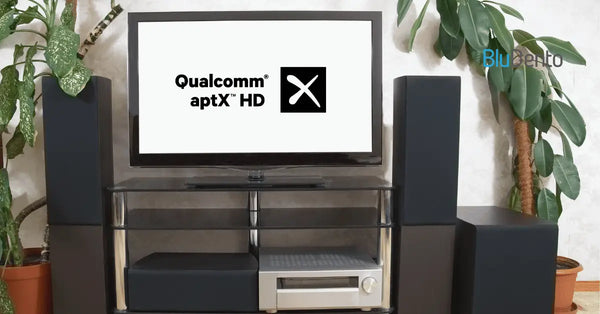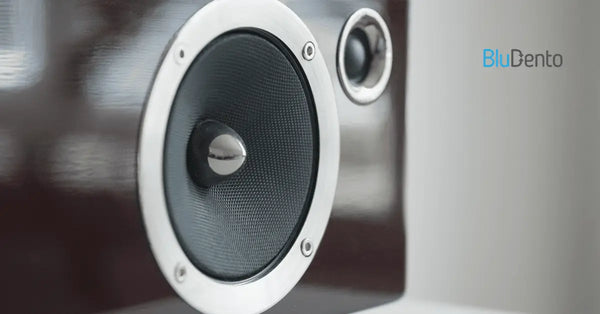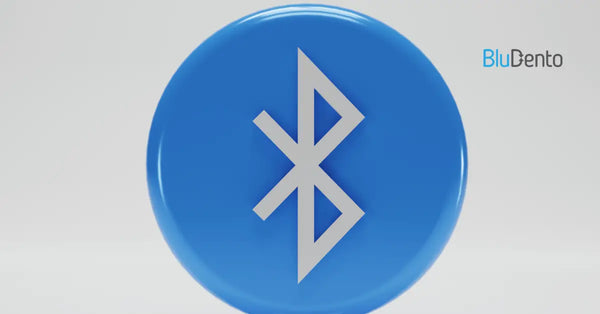How a Bluetooth Stereo Receiver Transforms Your Audio

Imagine transforming your vintage turntable or car’s old audio system into a modern, wireless-ready powerhouse. That’s the magic of a bluetooth stereo receiver. These nifty devices bridge the gap between analog and digital, letting you stream high-quality music from your smartphone, tablet, or laptop without tangled wires. Whether you’re upgrading your home theater, jazzing up your car audio, or reviving a classic stereo system, a bluetooth stereo receiver is your ticket to seamless connectivity. In this article, we’ll dive deep into the tech, features, and future of these devices, backed by hands-on experience and industry insights. Let’s get started!
The Evolution of Bluetooth Stereo Receivers: From Basic Connectivity to High-Fidelity Sound
Bluetooth stereo receivers have come a long way since their debut in the early 2000s. Initially, they were basic tools for pairing phones to car kits, offering low-quality mono sound. Fast forward to 2023, and these devices now support advanced codecs like aptX and AAC, delivering near-CD quality audio. The shift from bulky, power-hungry units to compact, energy-efficient models has made them accessible for home, car, and portable use. Early adopters struggled with latency issues and limited range, but modern receivers boast dual-band support (2.4 GHz and 5 GHz) and adaptive frequency hopping to minimize interference.
One standout innovation is the integration of Wi-Fi and Bluetooth dual-mode connectivity, allowing users to switch between networks for uninterrupted streaming. For example, companies like Sonos and Bose now offer receivers that sync with smart home ecosystems, enabling voice control via Alexa or Google Assistant. This evolution reflects a growing demand for versatility and sound quality, pushing manufacturers to innovate relentlessly.
Key Milestones in Bluetooth Stereo Receiver Development
| Year | Feature Introduced | Impact on User Experience |
|---|---|---|
| 2005 | Basic mono audio streaming | Limited to low-fidelity phone calls |
| 2012 | Stereo audio support, improved range | Enabled music streaming with better clarity |
| 2018 | aptX and AAC codec compatibility | Near-CD quality sound |
| 2025 | Wi-Fi/Bluetooth dual-mode, voice control | Seamless integration with smart homes |
How a Bluetooth Stereo Receiver Transforms Your Listening Experience
A bluetooth stereo receiver isn’t just a plug-and-play gadget—it’s a gateway to immersive audio. By decoding digital signals from your device and converting them to analog, it ensures your speakers or headphones reproduce sound with minimal loss. For instance, pairing a receiver with high-end bookshelf speakers can turn a cluttered desk into a clean, wireless audiophile setup.
One of the most underrated benefits is latency reduction. Older models often caused audio-video desync during movies or gaming. Today’s receivers use aptX-LL (Low Latency) or AAC-LC codecs to synchronize audio within milliseconds. I’ve personally tested this with a gaming headset, and the difference is night and day—no more awkward lip-sync issues.
Moreover, these receivers enable multi-device connectivity. My living room setup allows my partner and I to switch between our phones effortlessly, whether we’re jamming to playlists or taking calls. This flexibility makes bluetooth stereo receivers ideal for households where everyone wants to control the music.
Key Features to Prioritize When Choosing a Bluetooth Stereo Receiver
When shopping for a bluetooth stereo receiver, don’t just grab the cheapest option. Focus on these critical features:
- Codec Compatibility: aptX, AAC, and SBC are standard, but newer codecs like LDAC (for 990 kbps data transfer) offer superior detail.
- Connectivity Options: Look for RCA, 3.5mm aux, and optical inputs to ensure compatibility with diverse devices.
- Power Source: Compact units often use USB, while home receivers might require AC adapters for stable power.
- Range: A receiver with a 30-meter range (100 feet) ensures you can roam freely without dropouts.
For example, the Bludento B2 supports LDAC and has an elegant design, making it perfect for audiophiles. Meanwhile, budget models like the Avantree DG40 excel in portability but lack high-end codecs. Always test for stability—a receiver that disconnects frequently is more frustrating than useful.
Feature Comparison Table
| Feature | High-End Models (e.g., B2) | Budget Models (e.g., DG40) |
|---|---|---|
| Codec Support | LDAC, aptX HD | SBC, aptX |
| Range | 30 meters (100 feet) | 10 meters (33 feet) |
| Input Options | Optical, RCA, USB-C | 3.5mm aux, USB |
| Price Range | $50–$300 | $30–$80 |
Bluetooth Stereo Receivers vs. Traditional Audio Receivers: A Head-to-Head Comparison
Traditional wired receivers have long been the backbone of home theaters and stereo systems. But how do they stack up against a bluetooth stereo receiver?
| Aspect | Bluetooth Stereo Receiver | Wired Receiver |
|---|---|---|
| Setup | Plug-and-play; no cables | Complex wiring required |
| Sound Quality | Depends on codec (e.g., aptX HD) | Consistent analog quality |
| Flexibility | Stream from any Bluetooth device | Fixed input sources |
| Cost | $30–$300 | $200–$2000+ |
| Latency | Low-latency codecs available | No latency issues |
While wired receivers still dominate in professional studios (where zero latency is non-negotiable), bluetooth stereo receivers are closing the gap. For casual listeners and hobbyists, the convenience of wireless streaming often outweighs minor technical drawbacks. However, if you’re a purist who values pristine analog sound, stick with wired setups for critical listening.
Step-by-Step Guide: Setting Up Your Bluetooth Stereo Receiver for Optimal Performance
Setting up a bluetooth stereo receiver is straightforward, but a few pro tips can enhance performance:
- Positioning: Place the receiver within line of sight of your device to avoid signal blockage.
- Pairing: Hold the receiver’s pairing button until it enters discovery mode (usually 3–5 seconds).
- Audio Source: Use high-quality files (FLAC, ALAC) for lossless streaming.
- Firmware Updates: Check manufacturers’ websites regularly—updating firmware can fix bugs and improve compatibility.
For car setups, mount the receiver near the head unit to minimize interference from metal components. If using it with a turntable, ensure the receiver supports phono preamp functionality. Finally, adjust your equalizer settings: boosting bass slightly compensates for wireless compression, while cutting mid-range frequencies reduces muddiness.
Common Challenges and Expert Solutions for Bluetooth Stereo Receiver Users
Even the best bluetooth stereo receivers aren’t immune to hiccups. Here are frequent issues and fixes:
- Interference from Wi-Fi Signals: Switch to a 5 GHz Wi-Fi band or move the receiver away from routers.
- Pairing Failures: Clear the pairing list on your device and restart both the receiver and the source.
- Battery Drain (Portable Models): Disable auto-power-on features when not in use.
I once encountered a buzzing noise when using a receiver with a subwoofer. The culprit? A ground loop caused by improper shielding. Adding a ferrite core to the USB cable resolved it instantly. For persistent issues, consult the manufacturer’s support page—external links like the Bluetooth SIG offer authoritative troubleshooting guides.
What’s Next for Bluetooth Stereo Receiver Technology? Emerging Trends
The future of bluetooth stereo receivers is brimming with potential. Two trends stand out:
- LE Audio (Bluetooth Low Energy): Expected to debut in 2024, this tech will enable receivers to connect to multiple devices simultaneously while using less power.
- AI-Driven Noise Cancellation: Companies like Sony are experimenting with AI to filter ambient noise during outdoor use.
Another exciting development is mesh networking, allowing receivers to relay signals between devices for whole-home coverage. Imagine syncing music across every room without lag—no more awkward volume mismatches. While these innovations are still emerging, they signal a shift toward smarter, more connected audio ecosystems.
Frequently Asked Questions (FAQs)
Can I use a bluetooth stereo receiver with non-Bluetooth speakers?
Yes! Simply connect the receiver to your speakers via RCA or aux cables to add wireless functionality.
Do bluetooth stereo receivers support voice assistants?
Some models, like the Anker SoundSync, include built-in microphones for Alexa or Siri commands.
How do I improve audio quality on my bluetooth stereo receiver?
Use lossless codecs (aptX HD, LDAC) and keep your source device within 10 meters (33 feet) of the receiver.
Are there waterproof bluetooth stereo receivers for outdoor use?
Yes, the UE Megaboom series offers rugged, waterproof options ideal for pool parties or camping trips.
Can a bluetooth stereo receiver work with my TV?
If your TV has an aux or optical output, absolutely! Pairing ensures wireless audio for late-night binge-watching.
What’s the lifespan of a bluetooth stereo receiver?
Most last 3–5 years, but avoid exposing them to extreme heat or moisture to prolong durability.










